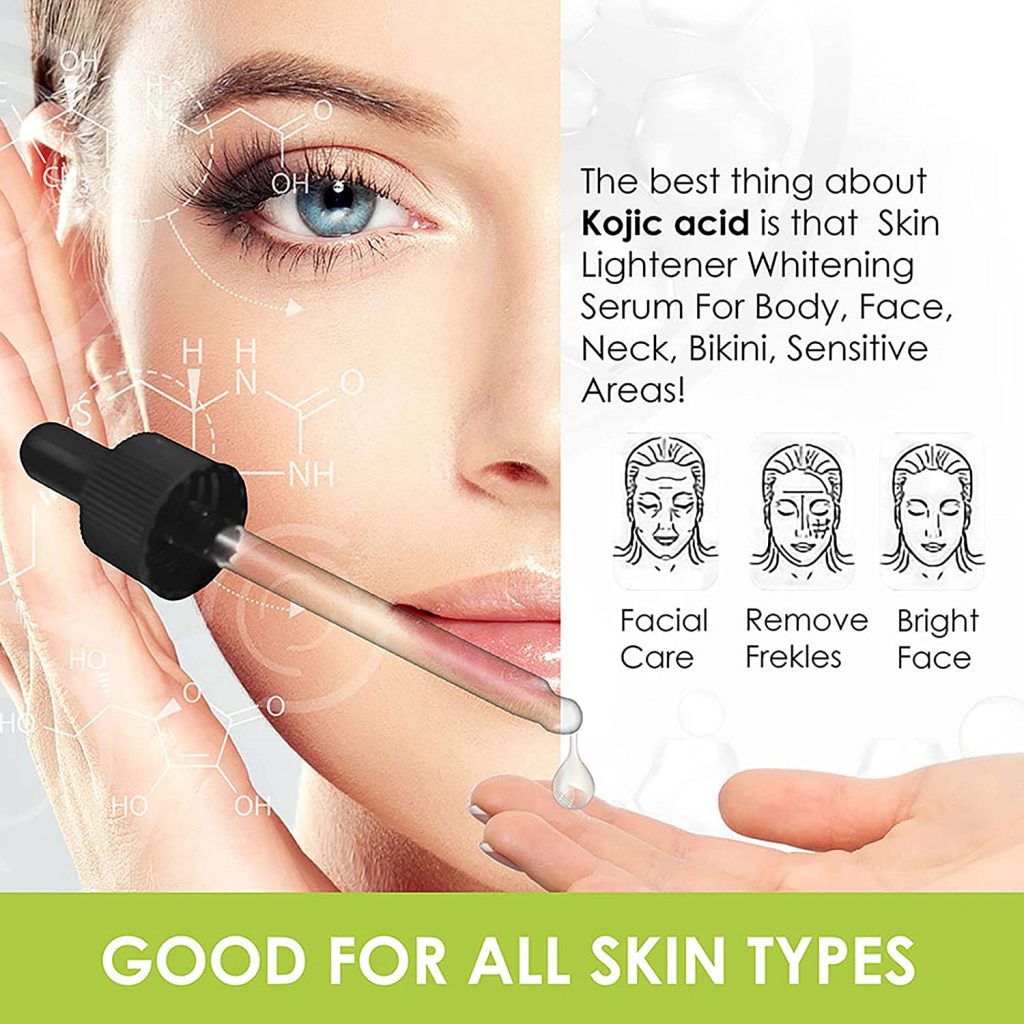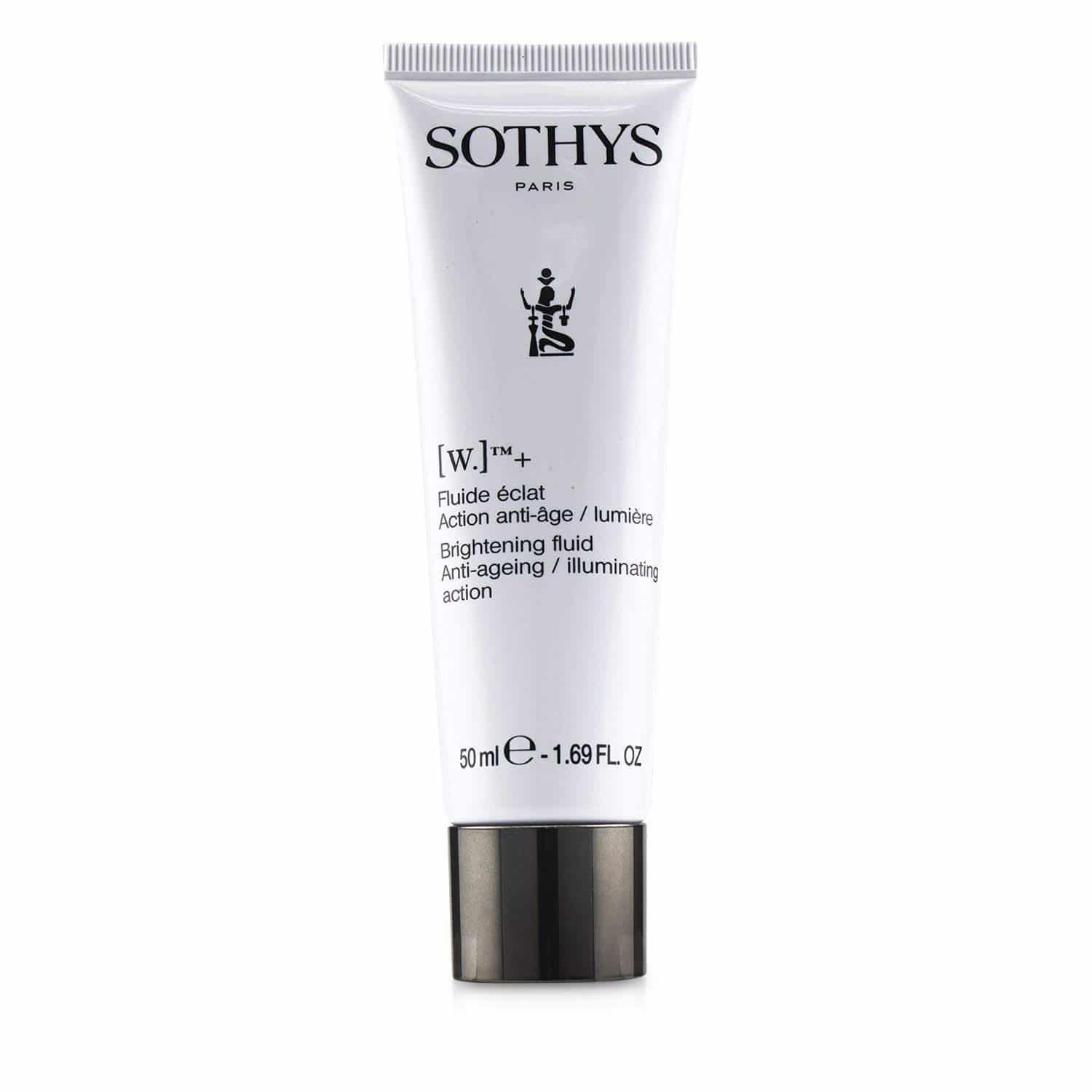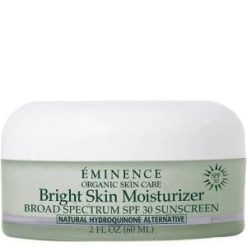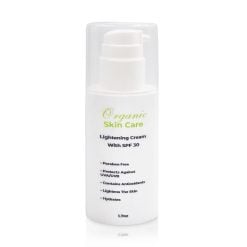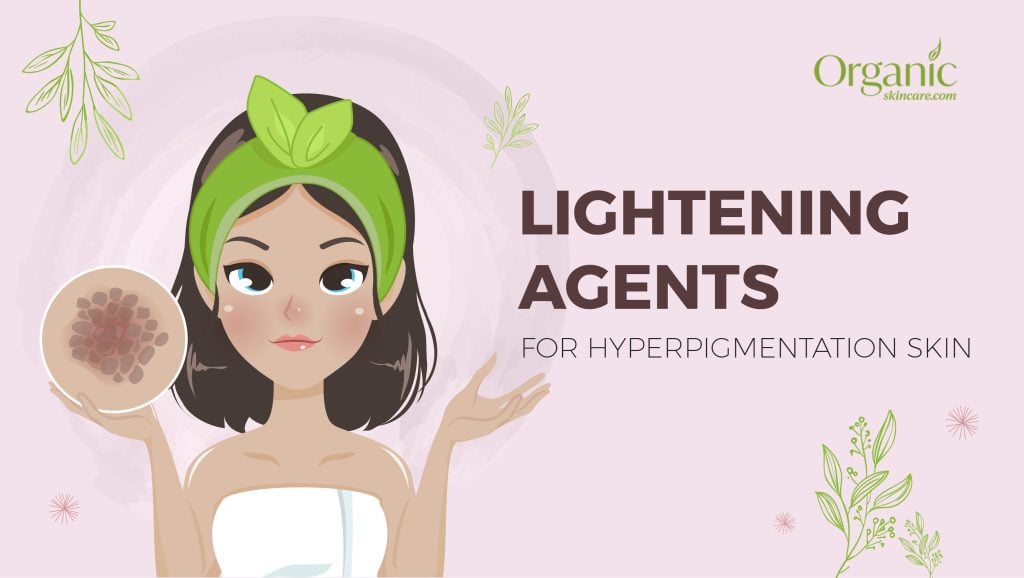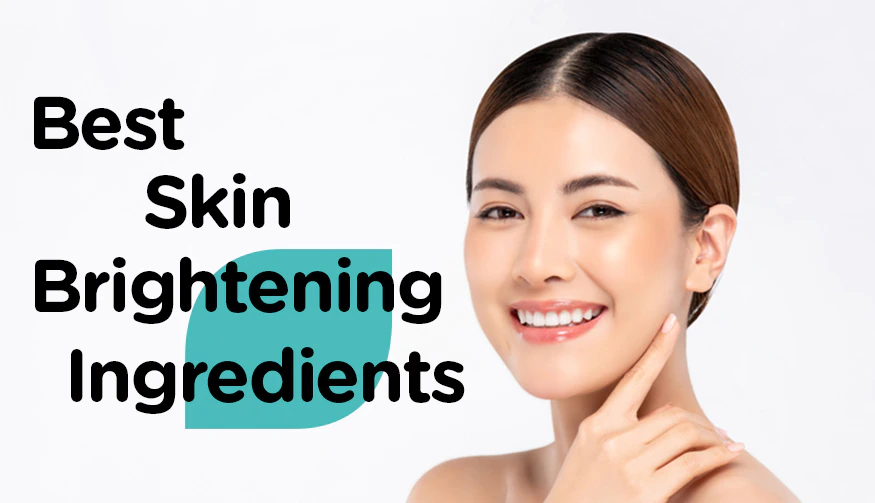Any kind of skin irritation can lead to dysregulation in pigment production, causing dark spots. This can be from healing acne, or irritating skincare products. It’s referred to as post-inflammatory hyperpigmentation, and it can take a very long time to fade naturally. However, there are several treatments that you can use to speed up the process—so let’s discuss the top ten ingredients you should be looking for in your skincare products.
1. Vitamin C
Vitamin C is an antioxidant, so it inhibits free radical formation that can lead to oxidative damage and subsequent upregulation in pigment production. It also can inhibit tyrosinase, which is an enzyme that leads to hyperpigmentation.
However, Vitamin C products, specifically ones in the form of L-ascorbic acid, are very unstable. We have the most data on L-ascorbic acid, so we know that it degrades very easily, and when this happens, it can be incredibly irritating to the skin. Not only that, but L-ascorbic acid is a water-loving, charged molecule. This makes it very difficult to get it into the skin, and it oxidizes very easily when exposed to air and light. As a result, manufacturers have a few challenges to overcome in order to create a product that is actually going to work—but because Vitamin C is not an actual drug that we are prescribed, there’s really not much onus on the manufacturer to prove these things.
SkinCeuticals’ CE Ferulic serum is an excellent product. They have done a few things with the Vitamin C that have been shown to help stabilize it, allowing it to effectively penetrate the skin. They’ve added ferulic acid and Vitamin E, both of which have been shown to enhance the penetration and stability of L-ascorbic acid.
The best way to use Vitamin C products is in the morning. Apply them to your skin, allow them to absorb and dry, and then put on sunscreen over the top. It’s better to use them in the morning than at night because their antioxidant properties will be more helpful in scavenging the free radicals that you’re exposed to during the day.
2. Hydroquinone
Hydroquinone has been the gold standard for treating hyperpigmentation for more than 50 years. Like Vitamin C, it works by inhibiting tyrosinase. Now, the downside of hydroquinone is that is irritating, and with long term use it can cause rebound worsening of the hyperpigmentation, so you have to be really careful with it.
Hydroquinone can be bought over the counter at two percent strength, or it’s available by prescription. The prescription stuff typically is more effective, but potentially more irritating. It is best to pursue hydroquinone under the supervision of a dermatologist to get the best results. That’s not to say that the OTC products are off the table, but they can be very irritating and you’re likely to have better results with professional supervision.
A good hydroquinone product that’s very affordable is Ambi Fade Cream, which is two percent hydroquinone. You want to apply it in the evening or in the morning, or you can apply it twice a day if you tolerate it without any irritation. You shouldn’t apply it to a widespread area, but instead only to the areas of hyperpigmentation. Put the hydroquinone in the center of the area of hyperpigmentation and then feather it out to the periphery of the affected area. You shouldn’t use it for longer than 5-6 months without taking a break, because if you do that, it can affect the neighboring melanocytes that were otherwise normal and lead to rebound hyperpigmentation.
Hydroquinone is obviously not perfect, and there can be lots of little issues that are very nuanced from person to person. It’s also not available over the counter everywhere, so it may not even be available to you depending on where you are in the world.
3. Kojic acid
Kojic acid is derived from mushrooms and was discovered in Sake fermentation. It acts as a copper key factor, which inhibits the enzyme tyrosinase. In a sense, it starves tyrosinase, preventing it from having any impact. It can cause irritating in some people, but it is generally very well tolerated.
It can take several months to start seeing improvement, but as long as you’re tolerating it, you can definitely appreciate some improvement in that hyperpigmentation.
The La Roche-Posay Melody Pigment Control serum has both Kojic acid and glycolic acid, which will help fluff off some dead skin cells and improve the penetration of the Kojic acid. You don’t have to be precise in your application, but you can apply it specifically to areas of hyperpigmentation if you would like to make the product last longer.
The PCA Skin Pigment gel is also a good product with kojic acid. PCA makes two versions, one with hydroquinone and one without. The one without is less irritating, but it’s down to personal preference and how your skin tolerates it. Try it once a day to see how your skin tolerates it, and as long as it’s working for you, you can apply it twice a day for maximum benefit.
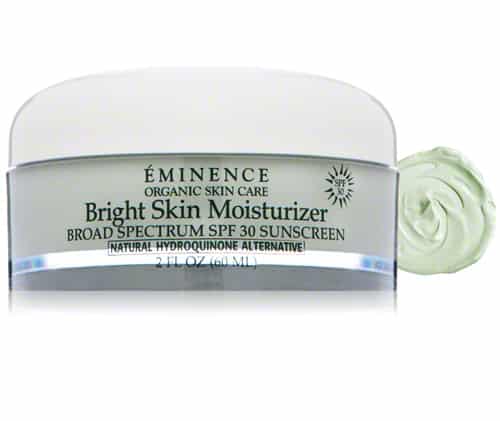
Bright Skin Moisturizer Broad Spectrum SPF 40 Sunscreen hydrates, and protects the skin during sun exposure to prevent premature aging while helping even out the skin tone.
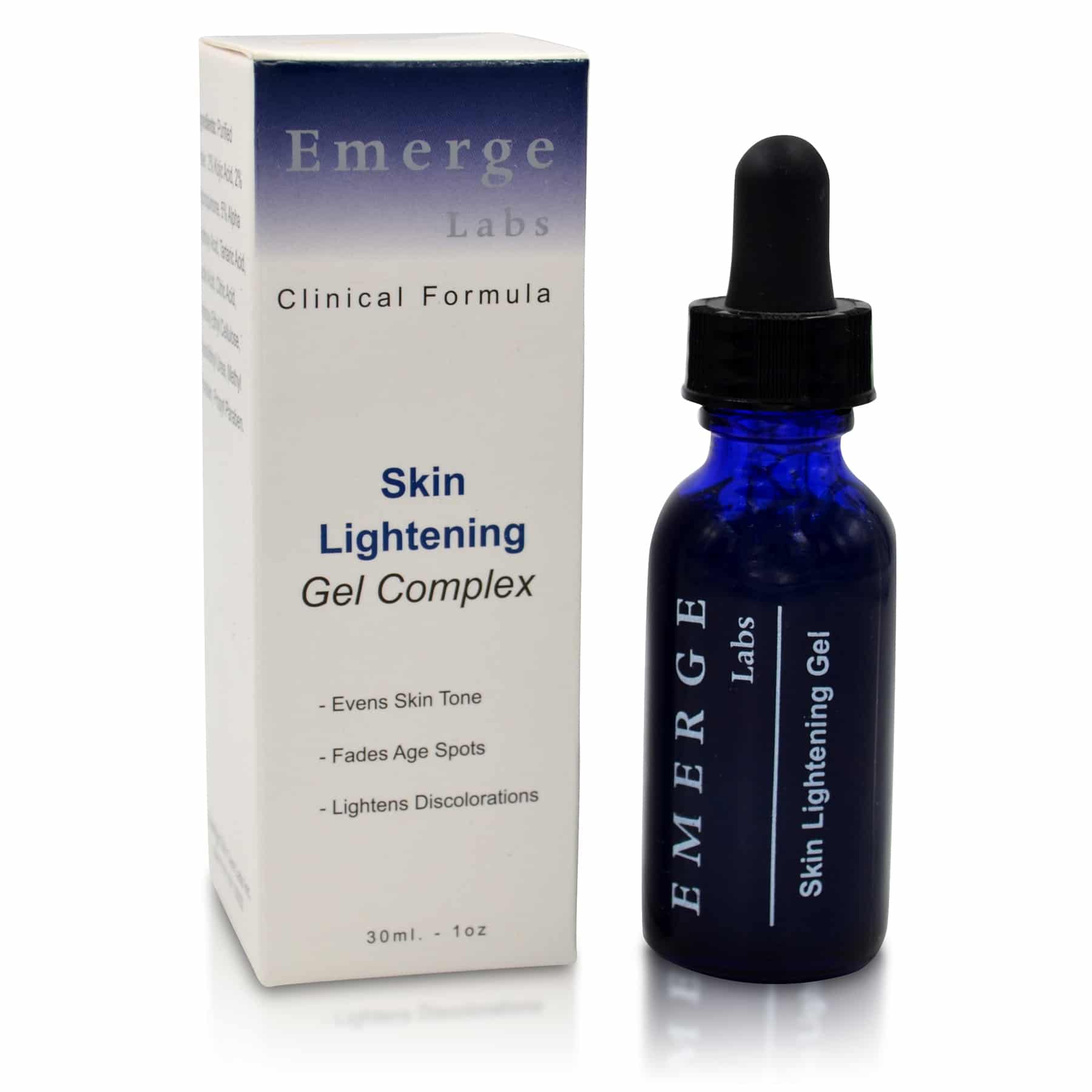
Visibly brightens and evens skin tone. Fades dark spots, age spots, skin discoloration, uneven skin tone, sun spots, freckles, and acne scars. Can be used on the face, hands, chest, knees, elbows, and other sensitive skin areas.
4. Soy
Soy is very well tolerated—unless, of course, you have a soy allergy. It prevents the pigment from entering the top layers of the skin, thus inhibiting how pigment moves around and evening out skin tone. It’s also anti-inflammatory, has anti-wrinkling and skin-firming effects, and can scavenge free radicals. It’s also been shown to improve thinning skin, a natural part of aging. You can apply it morning and evening for the best results.
The SANA brand from Japan is excellent, and all their products include soy. Their facial lotion in particular is very effective; just put it on in the morning, let it absorb, and put your sunscreen over the top.
5. Azelaic Acid
Azelaic acid is great for people who have sensitive skin and/or acne, in addition to hyperpigmentation. It inhibits free radicals and tyrosinase, thus improving hyperpigmentation, and benefits your skin in other ways. It can help break up closed comedones, or whiteheads, and it’s anti-inflammatory and antibacterial. Its antibacterial properties mean that it works as an effective treatment for rosacea in addition to hyperpigmentation. It’s also easy to tolerate, meaning that almost anyone can benefit from using azelaic acid without worrying about potential irritation.
Though most research into azelaic acid has been into prescription-strength treatments, it is possible to buy over the counter at lower strengths. Paula’s Choice 10% Azelaic Acid Booster, or their ordinary azelaic acid are both very good and come highly recommended.
You should apply azelaic acid at nighttime to see how you tolerate it, as it can sting and be drying—however, it is generally very easy to tolerate. If it works for you, then you can bump it up to applying twice daily.
6. Vitamin A
Topical vitamin A is an umbrella category that includes prescription retinoic acid, retinoic acid derivatives, adapalene, tazarotene, and cosmeceutical retinols. All of these not only inhibit tyrosinase, but they also aid skin cell turnover, which helps clear hyperpigmentation and smooth out the surface of the skin, allowing for a more luminous glow. It also has antiaging and antiacne properties and is often combined with hydroquinone to treat hyperpigmentation as the two complements each other so well. However, this is not always the best choice for those with sensitive skin or rosacea as it can irritate and aggravate these conditions.
Many forms of Vitamin A aren’t stable in light, so it’s best to apply these products at night to a clean and moisturized dry face. This is the best way to avoid irritation and prevent the products from degrading due to light exposure.
It is worth noting that some other ingredients cannot be combined with retinol, including salicylic acid. You must always do your research, and ensure that if you’re using products with ingredients that could interact badly that you use them at different times of the day.
7. Salicylic Acid
Salicylic acid is anti-inflammatory and helps speed up skin cell turnover, thus smoothing out the skin and removing superficial hyperpigmentation. It can also brighten the skin and help give some control over acne. Its skin brightening and smoothing properties mean that it’s great from an antiaging perspective, too. It’s recommended that salicylic acid products are used in the morning underneath sunscreen. However, it can aggravate sensitive skin and rosacea, so should be used with caution.
8. Licorice Root
Licorice root can inhibit how pigment is dispersed throughout the skin, thus having a brightening effect and evening out the complexion. Licorice root is also very good for reducing redness and irritation, as it’s anti-inflammatory.
The ProCure Rosacare moisturizer is a particularly good product, as not only does it have licorice root as its main product, but it also has a green tint to it that will color correct redness. It works best when applied underneath moisturizer, first thing in the morning, before sunscreen. It’s not an ingredient you have to introduce slowly as it’s generally very well tolerated, but you can if you want to.
9. Niacinamide
Niacinamide has a multitude of uses and benefits, but it’s particularly useful for treating hyperpigmentation. It interferes with the melanocytes, which make the pigment, and the skin cells, of keratinocytes. This prevents hyperpigmentation from getting worse. It’s also anti-inflammatory, reduces oiliness, and has been shown to help in treating acne.
You don’t need a particularly strong concentration or dedicated product; 2% moisturizer has been shown to noticeably improve the appearance of hyperpigmentation and melasma. Almost all CeraVe products contain niacinamide, and their products are amazing for treating skin issues. Their resurfacing retinol serum is particularly good, as it includes retinol and licorice root as well as niacinamide. It aids skin cell turnover, controls acne, reduces inflammation, and tackles hyperpigmentation.
10. Sunscreen
The best ingredients for hyperpigmentation are actually the active ingredients in sunscreen. Sunscreen alone can massively improve hyperpigmentation. It’s also critical for ensuring that any other products work, as exposure to ultraviolet radiation from the sun drives hyperpigmentation. UVA and blue light wavelengths have been proven to contribute to hyperpigmentation, specifically early-onset and long-lasting hyperpigmentation. This is true even for sunlight coming through a window, so you must wear proper sunscreen even if you’re inside all day.
Chemical sunscreens that include filters such as avobenzone and oxybenzone provide very strong protection against UVA. However, they can be irritating, which means they’re not always the best choice for trying to combat hyperpigmentation. Physical sunscreens which include zinc and/or titanium dioxide, or tinted mineral sunscreens that include iron oxides will provide protection against UVA instead and will be much less irritating.
However, you must remember that relying on sunscreen is not enough! You also need to be aware of how long you spend outdoors and wear sun-protective clothing such as broad hats and long-sleeved shirts to make sure your skin is properly protected.
Final Thoughts
There are a lot of ways you can fight against hyperpigmentation. Ultimately, what products and ingredients you choose to use will depend entirely on your preferences and your skin’s needs. Always do your research, and introduce new products into your routine slowly and carefully until you know that you can tolerate them.

